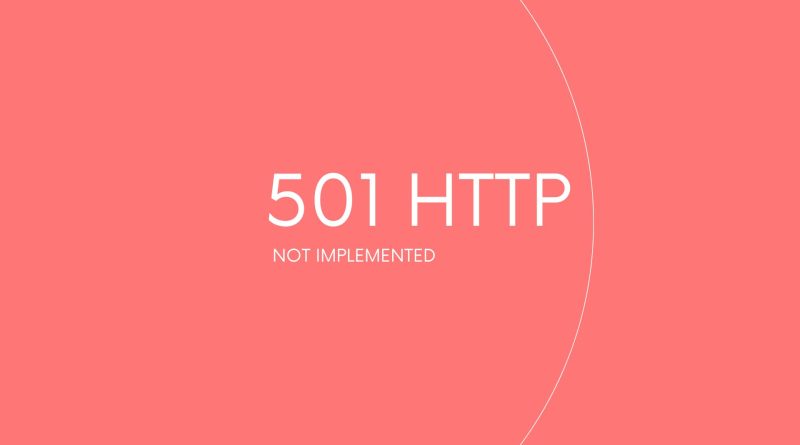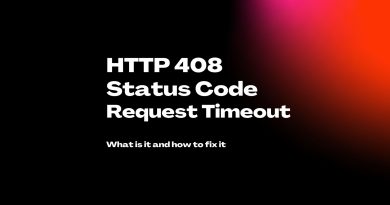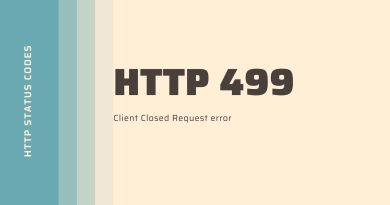501 HTTP (Not Implemented): What Is It and How to Fix It
Are you getting a 501 Http (Not Implemented) error message when accessing certain webpages? If so, don’t worry – this is actually quite common and easy to fix. In this blog post, we are going to take an in-depth look at what exactly the 501 error code means and how you can quickly get it sorted out. By understanding where the issue lies and having some basic technical knowledge or access to website experts, it’s likely just a few clicks away from being resolved. Let’s jump right in!
What are the http status codes?
HTTP status codes are numerical codes web servers use in response to requests from a client. These digital messages indicate the success or failure of an HTTP request. They allow web developers to identify and troubleshoot any problems that may arise. Commonly encountered HTTP status codes include 200 (OK), 404 (Not Found) and 502 (Bad Gateway). While there are many other HTTP status codes, these three primary codes are essential for successful website development and management.
What is the 501 Http status code?
The 501 (Http status code) is an server error response code indicating that the server does not recognize or support the request made by the client. It is often used in reference to web requests, as it indicates that the requested action cannot be carried out because it conflicts with current protocols or standards.
Causes of 501 Http Not Implemented error code?
- Unimplemented Request Method: If a client attempts to utilize an unrecognized request type, such as the PUT method on a server which only permits GET and POST requests, then it will result in the generation of a 501 error response from the server.
- Unsupported HTTP Version: If a customer sends an HTTP/2 request to an only-HTTP/1.1 server, the server cannot manage it and will consequently respond with a 501 error. This demonstrates how important it is for clients and servers alike to ensure that they are using compatible versions of Hypertext Transfer Protocol (HTTP) when making requests in order to successfully process them.
- Unsupported Media Type: If a client tries to upload an unsupported file format, the server will be unable to process it and instead display a 501 error code. This is due to the lack of compatibility between the requested files that are sent by clients and what can actually be processed by this particular server system.
- Unsupported URI Scheme: If a browser directs an HTTP server with ftp: protocol, the request will be declined causing a 501 error. This is because the server doesn’t register the URI scheme used in that particular inquiry.
- Unimplemented Extension: When an HTTP server receives a request with an extension that it does not support, such as deflate, then it will respond with a 501 error. This indicates to the client that their request cannot be processed by the server.
- Misconfigured Server: If the server is not correctly configured to respond to a browser’s request, it will result in a 501 error. This usually happens due to missing or wrong modules, incorrectly set up virtual hosts, or improper settings on the server itself.
Server side or client side issue
The 501 http error can be either a client-side or server-side error. It is typically a server-side error, but if the client incorrectly formed a request, then it could also be an indication of a client-side issue.
How to fix 501 Http error
There are several ways to fix a 501 HTTP error, depending on the cause of the error. Some possible solutions include:
- Implementing the Request Method: If your request method isn’t supported by the server and it is leading to errors, you can quickly fix this issue by updating the server so that it supports the client’s request.
- Updating the HTTP Version: To solve an error connected to a non-supported HTTP version, switch to the latest compatible version of HTTP that your server can work with.
- Supporting the Media Type: By updating the server, you can ensure that it can accommodate the media type preferred by your client.
- Supporting the URI Scheme: If the mistake is rooted in a Uri scheme that isn’t supported, updating the server to recognize and support your client’s Uri scheme should take care of it.
- Implementing the Extension: In order to satisfy the client’s request, upgrade the server with the appropriate extension.
- Server Configuration: If the issue is a result of improper server configuration, administrators can view and modify existing modules, virtual hosts or settings as necessary to return it to its optimal state.
- Clear browser’s cache: While clearing the browser cache may provide some relief, it’s implausible that this will fix a HTTP 501 error since it is usually caused by an issue with your server. If you still believe the problem stems from an outdated or broken cache file, try refreshing the page after erasing your web browser’s storage. But if these action fail to bring about any resolution, then chances are what you’re dealing with is more of a server-side fault; and thus should be tackled by someone with proper technical skills like a sever administrator.
- Disable proxy settings: A computer’s proxy settings can potentially cause a 501 error if the proxy server is not configured correctly or if there is a problem with the connection to the proxy server.
It’s important to note that the fix will depend on the specific cause of the error on the specific implementation, it’s advisable to consult the documentation and or the technical team responsible for the server.
Similar http status codes
Yes, there are a few HTTP status codes that are similar to HTTP 501 and indicate a similar problem. Some examples include:
- HTTP 502 Bad Gateway: When a gateway or proxy server is accessing the upstream server, this status code signifies that an invalid response was received.
- HTTP 503 Service Unavailable: This status code reveals that the server is enduring a short-term overload or maintenance, thus it cannot currently accept your request.
- HTTP 505 HTTP Version Not Supported: The server has denied the request because it does not recognize or accept the HTTP protocol version featured in your message.
All status codes similar to HTTP 501 demonstrate that there is an issue with the server’s capability to process a client’s request. However, this problem and its corresponding resolution can only be determined by checking out the specific code returned from the server.
All HTTP status codes by categories
Informational responses
(100 – 199)



